
Nowadays, glasses — one of the most common construction materials — are widely used in building architecture and modern facade designs, and make up window panes. Window insulation is useless without observing the latest standards of double- or triple-glazed glasses. A double-glazed window will be fully insulated if its glass is effectively soundproofed and insulated against heat. One of the main features of glasses the reflection of natural light back into the building and the consequent reduction in the use of artificial light and energy. Owing to the advancements in technology, a type of glass that is currently used in buildings to control solar radiations and prevent heat transfer through double-glazed windows is low-emissivity (Low-E) glass.
What is low-e glass and how does it function?
First, it is necessary to learn more about sunlight and the electromagnetic spectrum.
Solar radiations are divided into three main spectra depending on the wavelength.
۱٫ Ultraviolet (UV) Spectrum
Its wavelength is 300 to 380 nm, which is harmful for the human skin and eyes and also fades (or changes) the color of objects.
۲٫ Visible Light Spectrum
Its wavelength ranges from 380 to 780 nm and it includes all spectral colors of visible objects.
۳٫ The Infrared (IR) Spectrum
With a wavelength over 780 nm, the infrared spectrum transfers heat to the environment. In other words, infrared light is the sun’s heat wave emitted via long wavelengths. In fact, heat is radiated from the sun in the form of infrared waves.

The Behavior of Low-e Glass Towards the Electromagnetic Spectra
The low-e glass protects against a majority of harmful UV rays and IR heat waves without reducing visible light refractivity. When the sunlight hits a low-e glass, the visible light passes through it and reflects UV and IR waves.
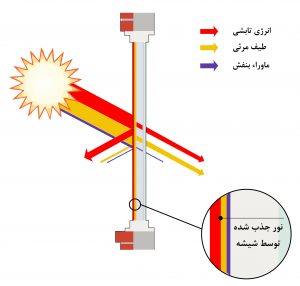
Glasses deal with the electromagnetic spectra in three ways:
۱٫ Reflect them.
۲٫ Absorb them.
۳٫ Pass them through.
• Solar control low-e glass is designed to pass the most visible light through and reflect infrared.
• Passive low-e glass is designed to pass the most of both visible light and infrared.
• Reflective glass generally reflects most of the visible spectrum
How does a low-e glass work?
A window’s low-e coating acts like the silver lining in the inner wall of a thermos flask.
When hot liquid is poured into a thermos flask with silver lining, the heat tends to go out, but the silver lining radiates it back and keeps the liquid warm.
When cold liquid is poured into a thermos flask, the silver lining stabilizes liquid temperature by reflecting the heat coming from outside.
The vacuum between the silver lining and the outer wall of the thermos flask provides stronger insulation.
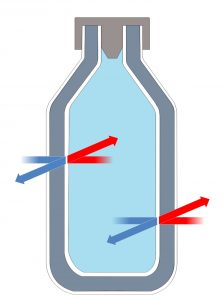
Low-e coating functions similarly. The thin, microscopic silver layer reflects the sun’s heat waves (infrared light) so as to preserve a comfortable interior temperature and improve window insulation. The covered area in an insulated glass, the air space thickness between the windows, and the number of walls of the insulated glass directly affect the low-e coating’s performance.
Emission Coefficient of Heat
Emission coefficient of heat is the relationship between the components of a surface and thermal radiation. In general, more reflective constituents will reduce emission. Due to being less reflective, dark surfaces have higher thermal radiation.
All window components reflect the heat at high infrared wavelength, and the intensity depends on surface temperature. Radiation is an effective way to transfer heat in doors and windows. To reduce the ingress of the sun’s radiant heat into the building through windows, the efficiency of window components should be improved.
For example, glasses with no coating have an emission coefficient of 84%, and those with low-e coating have a coefficient of 20%.
What is a low-e coating?
As insulating the building surfaces decreases heat transfer between the interior and the exterior, low-e coating also acts as a thermal insulation in glasses.
Low-e glasses incorporate linings of silver or other materials with similar emission coefficient. Therefore, silver-coated glasses reflect the heat and keep the indoor temperature constant.
Low-e Coating Thickness in Low-e Glasses
Although low-e glasses’ coating thickness is 500 times less than the human’s hair, it remarkably affects the energy consumption optimization in buildings. Moreover, it rarely changes the color and transparency of the glass due to the greatly reduced thickness of low-e coating.
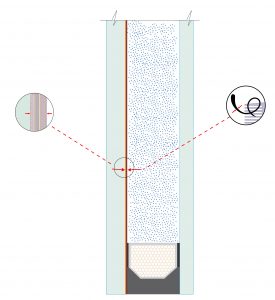
In winter when the indoor heat tends to move towards the outdoor cold, low-e glasses prevent the heat from going out and reflect it to the interior space. Therefore, these glasses reduce thermal energy loss in winter; and in summer, they prevent the ingress of the infrared light and heat waves into the building.
Different Types of Low-e Coatings
There are typically two types of low-e glasses:
۱٫ With passive low-e coating
۲٫ With solar control low-e coating
Most passive low-e coatings are made in the sputtering process. The sputtering occurs when a roll of glass passes over the conveyor, and the coating is consolidated and integrated as the glass moves over a heated surface.
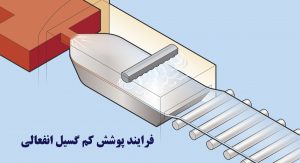
Passive low-e glasses are suitable for cold regions since they pass only some parts of the sun’s thermal radiation with short wavelength through the glass, and they protect against the harmful electromagnetic spectra.

Solar control low-e coatings are applied on glasses cut in different sizes to produce double-glazed glasses. Before the process starts, cropped glasses are put in a dark vacuum chamber at room temperature, and are then sputtered under the Magnetron Sputtering Vacuum Deposition (MSVD) process.
Solar control low-e coatings are suitable for dry regions since they have a low emission coefficient and a high control over sunlight transmission.
Low-e double-glazed glasses are offered in different conditions and modes.
Generally, double-glazed glasses have 4 layers by defined standards.
Layer 1 is the outer layer of the double-glazed glass, which cannot be covered by low-e coatings due to being exposed to the open air and external objects.
Layers 2 and 3 are placed facing each other within the double-glazed glass, and are separated by a spacer and an air layer. One or both of them can be covered by low-e coatings.
Layer 4 is like layer 1, and cannot be covered by low-e coatings due to being exposed to the open air and external objects.
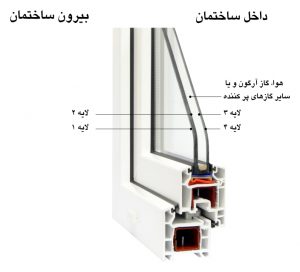


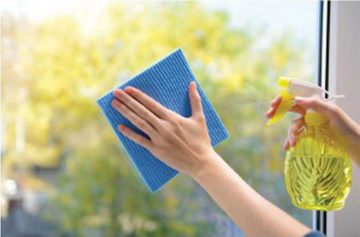


نظرات کاربران